Aloe Vera plants are popular plants known for their appearance, low maintenance, and medicinal benefits. But, you might be wondering why the Aloe Vera leaves are changing from green to red. Let’s understand the reasons behind it.
The primary reason behind Aloe Vera leaves turning red is exposure to direct sunlight. It is the plant’s natural response because it releases anthocyanin when exposed to the direct sun to protect itself from the UV rays. However, the foliage can similarly turn red due to inadequate care.
There are many reasons behind Aloe Vera turning red. This guide will give you all the reasons behind the discoloration of the aloe leaves.
Taking immediate steps and correcting the plant’s basic care can bring back the plant’s natural color faster.
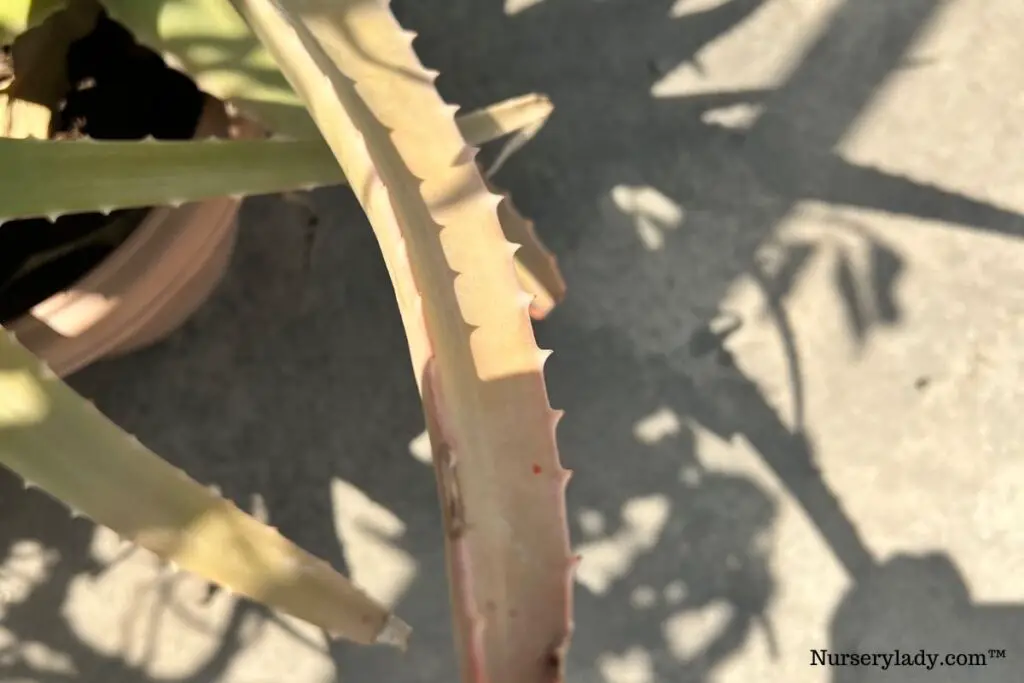
Why do Aloe Vera’s leaves turn red?
Aloes are drought-tolerant succulents that can thrive in a warm and dry climate.
Some common reasons behind redness are:
- Direct sunlight
- Lack of acclimatization
- Improper watering
- Heavy soil
- Bad fertilizing habits
- Transplant shock
- Cold stress and temperature fluctuations
- Bug infestation
- Natural redness
You can always bring the color back, whatever the problem is.
Let’s dive into the reasons quickly and ways to deal with them.
Color change from sunshine
Aloes love natural light.
It allows them to grow faster at their full potential.
Though some varieties of Aloe Vera will need partially shady areas, most grow best in a bright location.
Born as a sun-lover, Aloes will still turn red to bronze when the sun glazes intensely during the mid-day or afternoon.
This red color appears due to a pigment called anthocyanin.
This pigment gets produced as a shield to protect the plant from the harsh sun and harmful UV rays.
Aloe leaves turning red is a signal that you should give it some amount of shade.
If you ignore the signs, the plant will get sunburned and turn brown.
Generally, the outdoor Aloe Vera plants will become redder than the indoor plants.
There is another situation.
The Aloe Veras can store water in their leaves.
When this water heats up during direct sun exposure, the chlorophyll gets heated up and makes the leaves turn red.
This happens even with the wild Aloes.
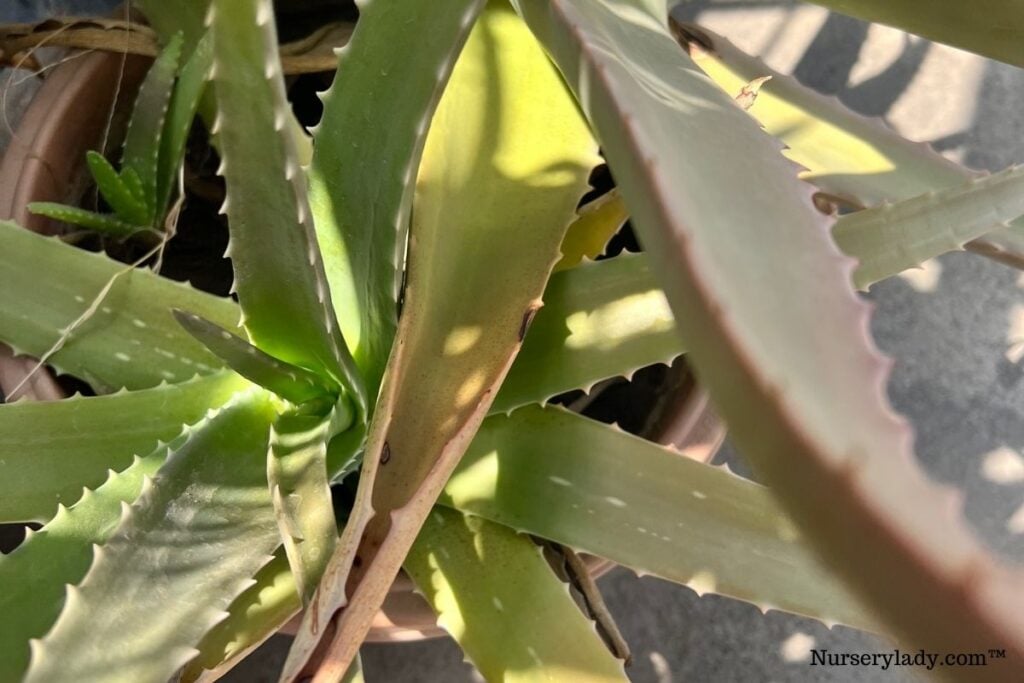
How to manage light exposure?
When you find the plant signaling you about the direct sun exposure, you should take immediate steps by shading the plant.
- If your plant is in the garden, fix transparent shading nets or clothes to filter the light.
- If your plant is indoors, bring them a few feet back from the windows during the summers, when the sunlight gets very intense.
- You can also shift them to the north or east-facing window. It receives milder sunlight compared to the south or west-facing windows.
- If you don’t have a north or east-facing window, place them near a sunny window and put on transparent curtains to filter the light.
Also read: What Kind Of Light For Aloe Vera Plants? (Full sun, Shade, Or Partial Light?)
Lack of acclimatization
The Aloe Vera plant enjoys bright sunlight.
It allows the plant to grow faster and bigger.
That is why most gardeners think of shifting the plant indoors to outdoors.
But, this process should be done gradually and not suddenly.
Natural light outdoors is enough brighter than the indoor lights.
Additionally, when you place the plant near the windows, the grills of the window can filter the sun’s ultraviolet rays.
That is why the indoor plants have less redness than the outdoor plants, as it is meant to stop the UV rays from reaching the sun directly.
How to acclimatize?
If you want to shift the plant from indoors to outdoors for sufficient sunlight, you should not be sudden. Be gradual.
- First, keep the plant outside for one hour and then bring it back inside. Slowly increase the timing.
- Similarly, when you think of bringing an outdoor plant indoors, follow the same way. You can also try an alternate way.
- Let the plant stand under a bright shady area for a few weeks before bringing it inside. It will help the plant to face the transition smoothly.
Also read: Where Should Aloe Vera Plant Be Kept? (Ideal Spot+Points To Remember)
Improper watering habits and bad drainage
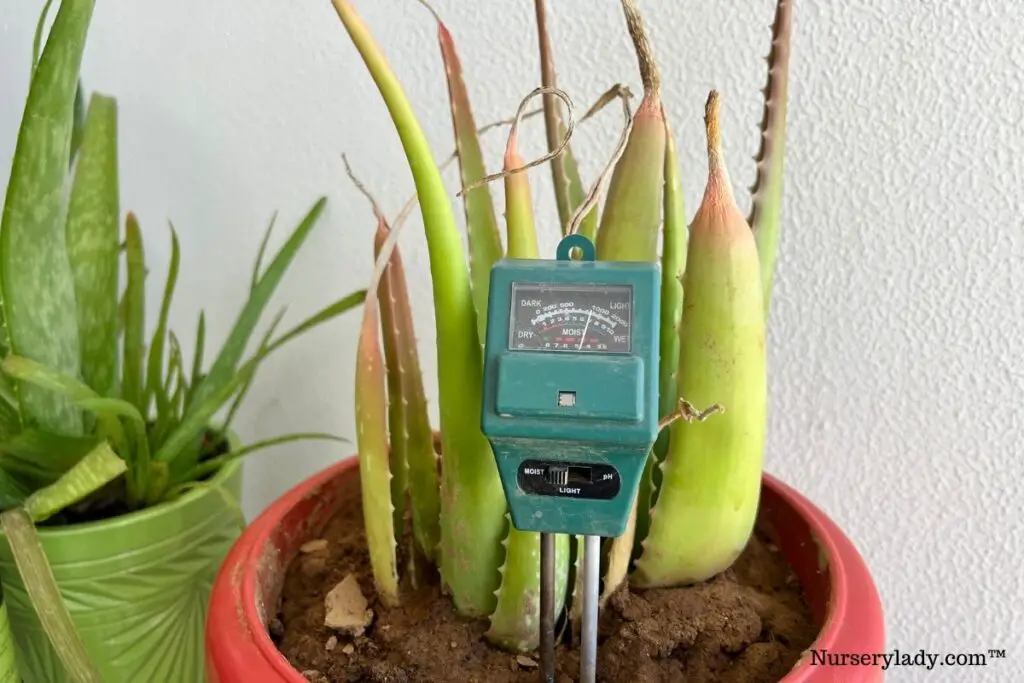
Overwatering can make the leaves turn red or brown.
Excessive watering and Aloe Vera don’t go side by side.
Aloes are naturally habituated to staying in dry conditions.
Overwatering will suffocate the roots and turn the leaves red and mushy.
Extended overwatering periods can result in root rot.
Overwatering can happen during two situations:
- You are watering the plant too frequently.
- You have kept the plant dehydrated and flooded your plant with water.
This color change, in this case, is not healthy for the plant.
You should check the condition of the plant, identify the problem, and take immediate action.
See if the leaves are soft and mushy or not.
It’s another sign of overwatering.
The plant will also turn red if they are not provided with enough water.
This is not generally a problem but an indication of extreme sunlight.
Check the soil condition and give them a good drink when you see such signs.
How to save an overwatered Aloe Vera plant?
- Stop watering for some days and wait for the soil to dry out.
- You must allow the soil to dry out before watering. Always check the moisture level of the soil and water the plant only when the top 2-3 inches of the soil is dry.
- If you must follow a routine, water the Aloe Vera plant once every 2-3 weeks. Still, you should check the moisture level weekly because the routine may differ depending on the season.
- If you are using a pot, ensure it has drainage holes. If not, you have to make one by drilling.
- Reduce watering during the winter. As the evaporation rate is slow, the soil takes time to dry. Also, water them less during the summer dormancy (when the temperature rises above 80-90°F).
Also read: How To Water Aloe Vera Plant? (How often, Summer, Winter)
Looking for gardening supplies? We have tested 100's of products before recommending them to you guys. Check out our best pick below:
| Image | Gardening Supplies | Best Price? |
|---|---|---|
 Top
Top Top
Top | Raised Garden Bed Kit | Check On Amazon |
 | XLUX Soil Moisture Meter, Plant Water Monitor, Soil Hygrometer Sensor for Gardening, Farming, Indoor and Outdoor Plants, No Batteries Required | No Results |
 Top
Top Top
Top | 82 Pcs Garden Tools Set and Extra Succulent Tools Set | Check On Amazon |
 | Joeys Garden Expandable Garden Hose with 8 Function Hose Nozzle, Lightweight Anti-Kink Flexible Garden Hoses, Extra Strength Fabric with Double Latex Core, (50 FT, Black) | No Results |
 Top
Top Top
Top | Dual Chamber Compost Tumbler | Check On Amazon |
 Top
Top Top
Top | Sunnyglade Plant Stakes | Check On Amazon |
 Top
Top Top
Top | Organic Cold Pressed Neem Seed Oil | Check On Amazon |
 Top
Top Top
Top | Mighty Mint Gallon :-Insect and Pest Control Peppermint Oil | Check On Amazon |
 Top
Top Top
Top | Scotts DiseaseEx Lawn Fungicide | Check On Amazon |
 Top
Top Top
Top | Jacks Classic 20-20-20 All Purpose Fertilizer | Check On Amazon |
 Top
Top Top
Top | 30,000 Seeds Pollinator Attracting Wildflower Mixture | Check On Amazon |
 Top
Top Top
Top | Survival Vegetable Seeds Garden Kit-Over 16,000 Seeds | Check On Amazon |
Heavy soil
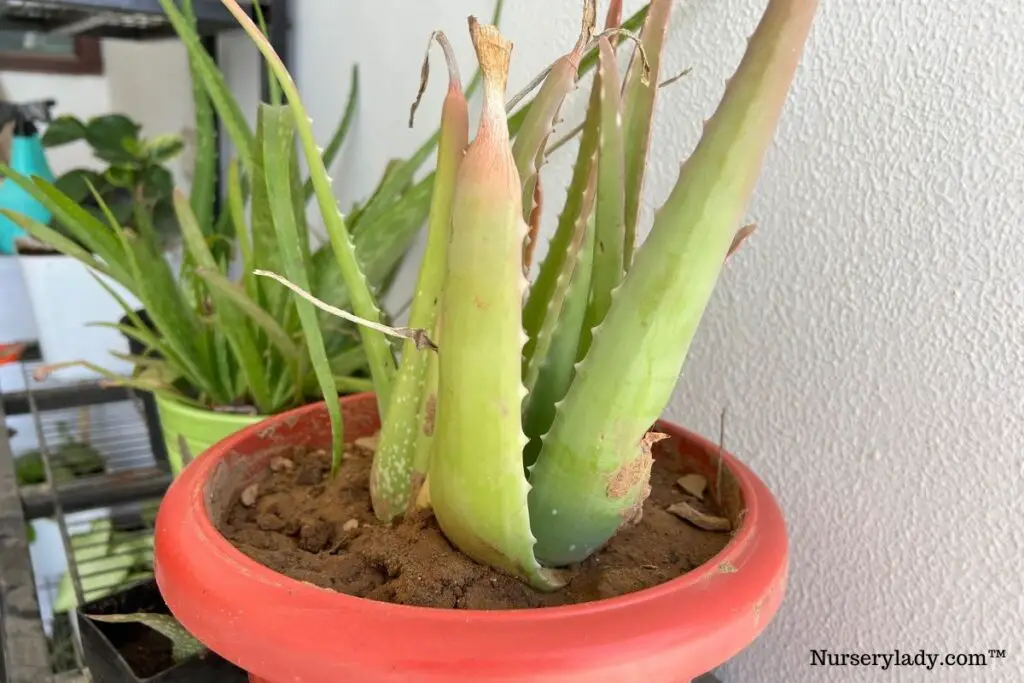
Aloe Vera plants need a lightweight and well-drained soil with neutral or slightly alkaline pH levels.
A heavy soil that retains moisture for prolonged periods also makes the Aloe Vera plant undergo overwatering despite you following the right watering schedule.
If your soil is not drying despite following the right watering schedule, the soil is the culprit.
How to amend the soil?
- You must use lightweight and well-drained soil for Aloe Veras. Cactus potting mix is good for them.
- If you are planting it in the ground, ensure to tilt the soil bed and add ingredients like perlite, pumice, or coarse sand.
- You can also add compost. It will help retain some amount of moisture and make the soil slightly nutritious. But, also check the drainage side. Don’t forget to add the porous ingredients.
Some ideal soil mixes for Aloe Veras are:
Recipe 1
- 50% potting soil
- 50% pumice
Recipe 2
- 3 parts potting soil
- 2 parts pumice
- 1 part peat
Recipe 3
Equal parts of:
For more soil mixes also read: What Type Of Soil For Aloe Vera Plant? (+Ideal Soil Mix)
Improper fertilization
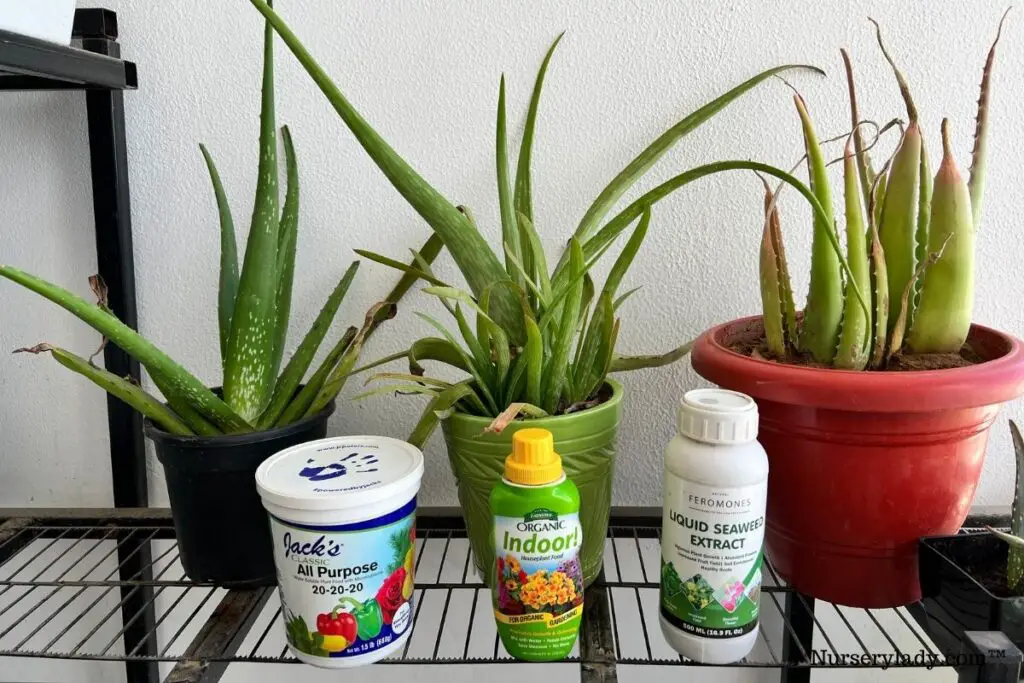
Aloe Veras require light feeding.
They can naturally grow over poorly nutritious soil, but slight feeding can increase their growth and support flowering.
The roots of the Aloe Vera plant can uptake the moisture level very quickly.
Frequent fertilizing can also make them uptake the nutrients quickly, resulting in over-fertilization.
Excessive nitrogen during the summer turns the leaves red.
Similarly, a lack of nutrients will lead to Aloe Vera turning red.
The soil alone won’t be able to provide the plant with all the nutrients.
The lack of phosphorus, magnesium, iron, and sulfur can make the plant red.
Additionally, the soil gets depleted over time, so the plant will require fertilization to fulfill this deficiency.
To understand the exact cause, wait and think about the last time you fertilized your plant.
How to maintain the right fertilization?
- If your plant is in a pot, flush off the excess minerals from the soil. Add water 5 times the volume of the planter. The soil must be completely dry before you do this procedure.
- Fertilize the Aloe Vera plants during their growing months, i.e., spring and summer. The plant will take and utilize the nutrients vigorously for growing and flowering.
- Don’t fertilize when the temperature rises above 80-90°F in summers. As it is their resting period, excess fertilizers can burn the roots.
- Start feeding the plant during the opening of the growing season. This will increase its growth. Follow this every six months until the late summer. But stop if the temperature increases too much.
- Organic fertilizers are milder than synthetic ones. The former will have less damage than the latter. For instant functioning, liquid fertilizers are best for Aloe Veras.
- Always dilute the fertilizer by making the strength to half the recommended dosage.
- Never apply fertilizer to dry soil. Always soak the soil 12 hours before application to prevent root burn and encourage rapid intake.
- Never fertilize during the winters. As they grow slowly, they won’t be able to use the nutrients.
Also read: Does Aloe Vera Need Fertilizer? (How Much, How Often+Best Pick)
Transplantation shock
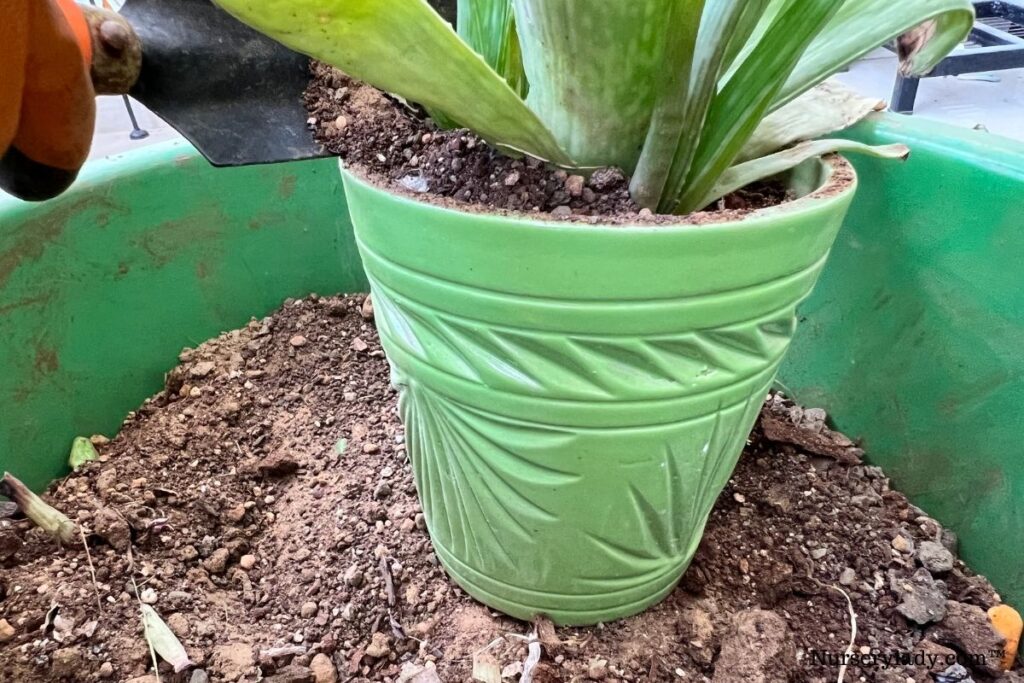
Transplanting the plant from its place to a different environment is one of the major events in the life of Aloe Veras, especially those in pots.
When the plant creates pups or becomes root-bound, you have to repot the plant in a big pot to give it space to spread and multiply.
Without enough room, the plant will fight for space, water, and nutrients.
It will result in stunted growth.
It will take time to adjust to its new home.
This is the plant’s natural response, and it will come back to its health.
In the meantime, don’t stress them and follow the basic care needs required during and after repotting.
Here are some tips:
- Always use a pot larger than the current one, about 1-2 inches bigger in diameter. Always go for a wider pot and not a deep one.
- Use terracotta pots if you tend to overwater. It can wick away moisture quickly.
- Use fast-draining soil, as suggested earlier in the article.
- Don’t expose the newly repotted Aloe Veras under direct sunlight for 1-2 weeks. Let it get adjusted to the new environment first. Also, don’t water them for some days.
- Hold on to fertilizing for at least 1-2 months. Since they are repotted with new soil, they will already get enough nutrients from the growing medium.
By following these above steps, your plant may not receive the shock.
However, it depends on how correctly you have done the repotting and whether the plant can handle the transplantation or not.
Also read: How To Repot An Aloe Vera Plant? (Step-by-Step Guide)
Temperature stress
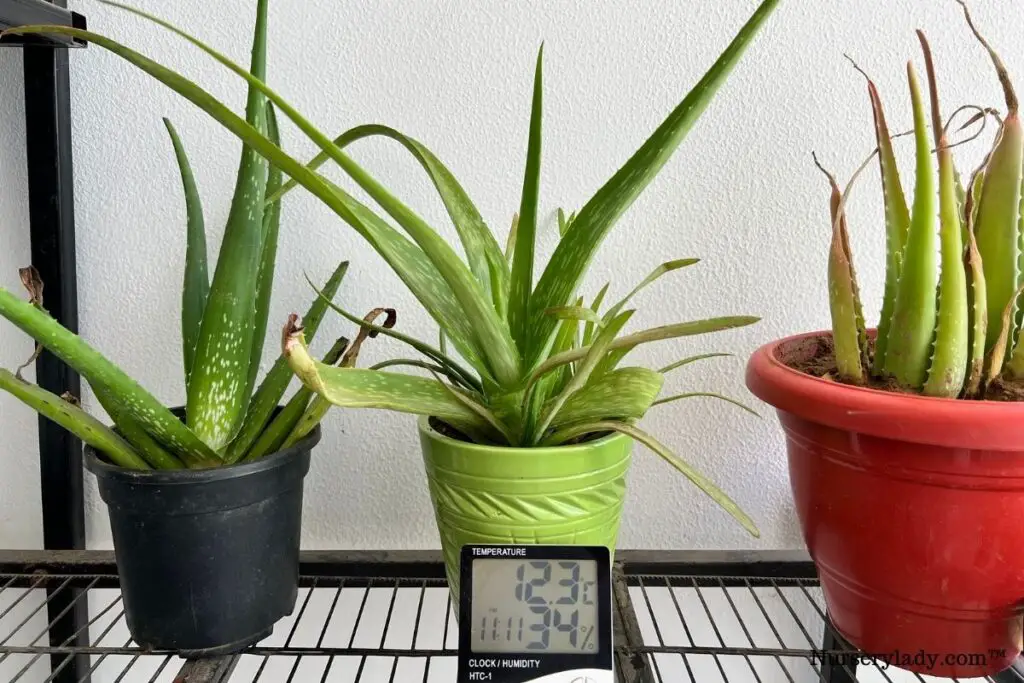
Aloe Veras enjoy warm temperatures ranging between 55 to 75°F.
Aloes are frost-intolerant and cannot survive below 50°F.
It can give them frost and freeze damages, the latter being the most dangerous.
Low temperatures can make the Aloe Vera leaves turn red or purple.
It is, again, due to the production of anthocyanins.
It gets produced automatically to protect itself from the cold temperatures.
You will see the leaves changing color even if they get a slight chilling period.
Aloe Vera turns red due to cold signals that the plant is getting cold and requires warmth.
If you ignore the indication, the plant will suffer frost damage or freeze damage.
Though you can fix the former, it is impossible to treat freeze damage.
Though this is more common in outdoor plants, indoor plants will also get it if exposed to air conditioners or direct fans.
How to protect them from the cold?
- If your plant is outside, the leaves will turn red during the second half of cool autumn. It is time you should bring them inside.
- If your plant near a window is getting red tints indoors, too, they are receiving the outside cold. You should close the windows and shift them to a warm room.
- A cold room will also give the same results. Keep the plant away from air-conditioned rooms and fans. Check the temperature of the particular place before placing it there.
- Place them near a south or west-facing window. These directions get the maximum amount of heat but are less intense than summers. It will keep the plant warm.
- Avoid watering. Always check the moisture level and only provide them with water if the top 2-3 inches are dry.
- If your area receives cold below 50°F, and you want to grow Aloe Vera outdoors, grow them in containers. It will be easier to bring them inside once the autumn gets cool.
- Temperature fluctuations also change them to red. Don’t keep the Aloes near a door or window that is frequently opened or closed.
Also read: Aloe Vera Temperature Tolerance: Ideal Temperature+Keeping Them Safe
Pest infestations
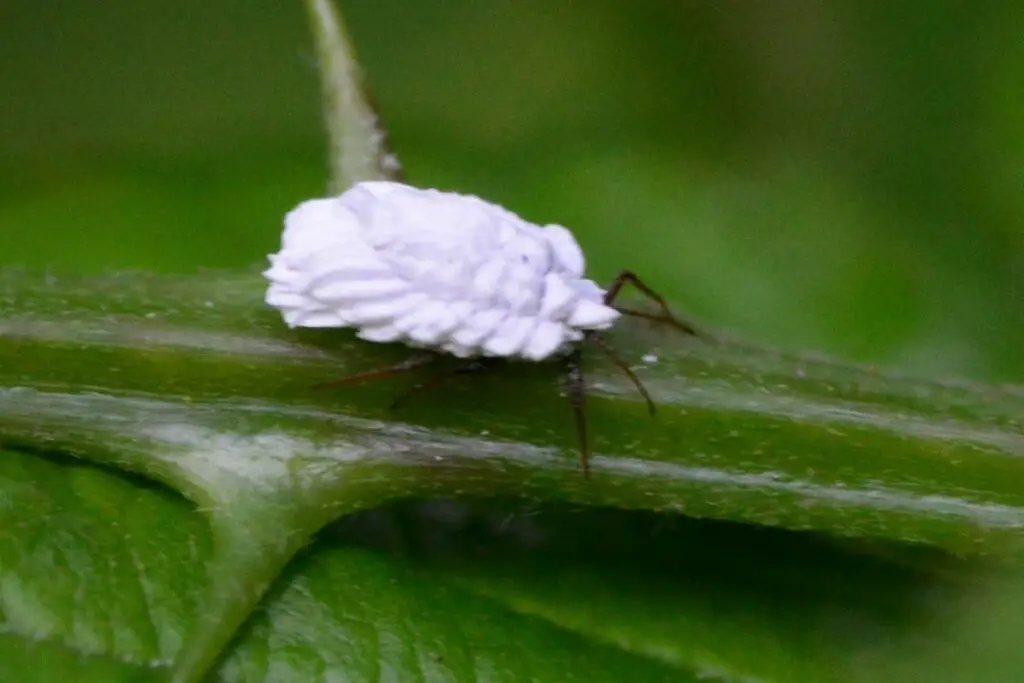
Bugs like aphids, spider mites, mealybugs, and scales can make the Aloe Vera turn red, pink, brown, or yellow.
The color of the leaves changes depending on the infestation level.
Sometimes, some insects leave behind red tints, due to which you can witness red spots on the leaves.
Though they are not visible to the naked eyes, the damage signs are enough to declare the infestation.
How to deal with bugs?
- Spray neem oil to the infected area, especially under the leaves.
- Dab cotton ball dipped in rubbing alcohol over the infected area. It will weaken and kill all the bugs, including the hard-shelled ones.
- You can use insecticidal soaps like Safer or Castile soaps.
- Some bugs don’t enjoy wet conditions. Use this point and shower the plant to remove the bugs.
- Similarly, some enjoy wet conditions. Stop watering and let the soil dry out.
- You can also release ladybugs to feed on the aphids and soft-scaled bugs.
Also read: Why Does My Aloe Vera Plant Have Bugs (+How To Eliminate)
Natural redness
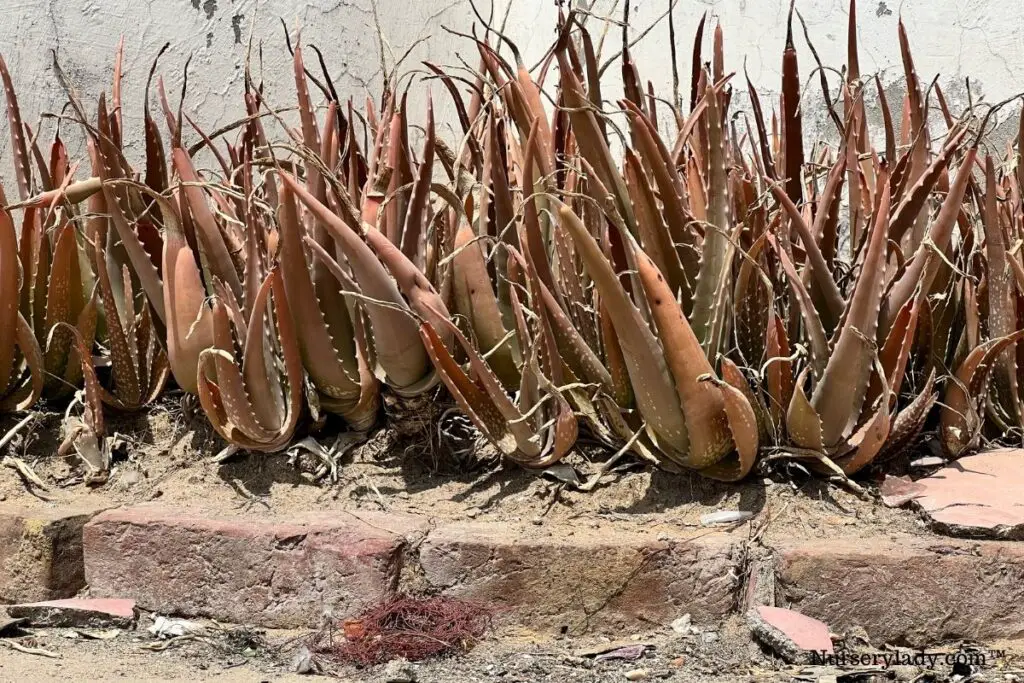
Some varieties of Aloe Vera have red leaves naturally.
Sometimes, it will vary depending on the weather and light.
For example, aloe Cameronii is red, and they belong to Zimbabwe and Malawi.
These Aloes will turn green with red edges and tips during the winters.
It is because the intensity of the sun and day hours are short during the winters.
But, they will remain completely red during the summer under sufficient sunlight.
Aloe Cameronii requires intense sunlight to show off its colors.
If you have this variety, grow them under the full sun the whole year to witness their red foliage.
Care tips in brief
| Factors | Care Tips |
|---|---|
| Light | The plant should neither get too intense sun nor too low light. It must receive enough warm sunlight for at least 5 to 6 hours. Fix shading nets outdoors or transparent curtains indoors in the windows if the sun gets intense. |
| Water | Water the Aloes once in 2-3 weeks. Always check the moisture level before watering and provide water only when the top 2-3 inches are dry. Sometimes, tap water also causes redness due to the harmful mineral deposits. Use distilled water or rainwater, and it should be tepid. |
| Soil | Use light, well-drained soil. Ensure that the container also has drainage systems. |
| Fertilizer | Fertilize only during the growing months. Apply less if you are confused. Less is more. |
| Temperature | The temperature should always remain within 55 to 75°F. Bring the outdoor Aloes indoors during winters. |
Final thoughts
The common reason behind Aloes turning red is due to excessive sunlight.
However, that’s not the only reason.
By following the proper care tips, you can prevent the plant from turning red.
Aloe Vera turning red is not the end of the plant.
You can always bring them back if you take quick action and a few steps.
Maintain the correct watering, fertilization, and temperature for Aloes.
Let them have enough sunlight but not too intense. Use well-drained soil and check for pests daily.
FAQS
Will Aloe Vera’s leaves become green again?
It depends on the level of redness.
If the leaves are partially red and you have taken immediate steps to revive their original color, your plant may come green.
If you want them to return green, you should go through all the reasons behind the redness I shared, find the right cause and deal with it as suggested.
If the damage level is within control, i.e., within 50%, your plant will undoubtedly come back green.
Will my Aloe Vera die after turning red?
Redness in the Aloe Vera plant is not the end of your plant.
Rather, it is a warning that your plant is not doing well in its present condition.
You just need to find the exact reason behind the problem and deal with it.
With proper care and maintenance, your plant will come back.
Reference: NCBI, New York Botanical Garden, University of New Hampshire, University of Florida, Wikipedia.
